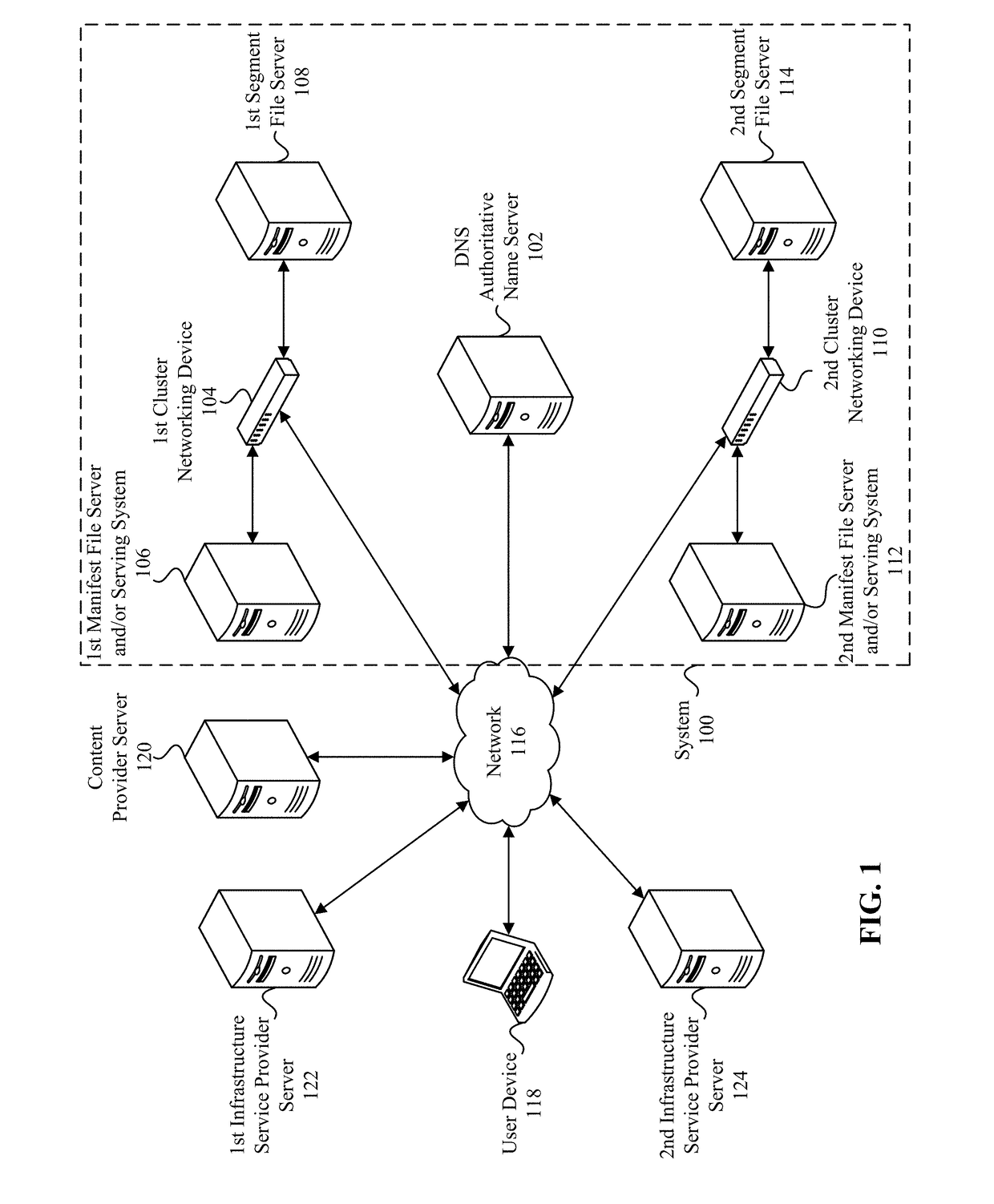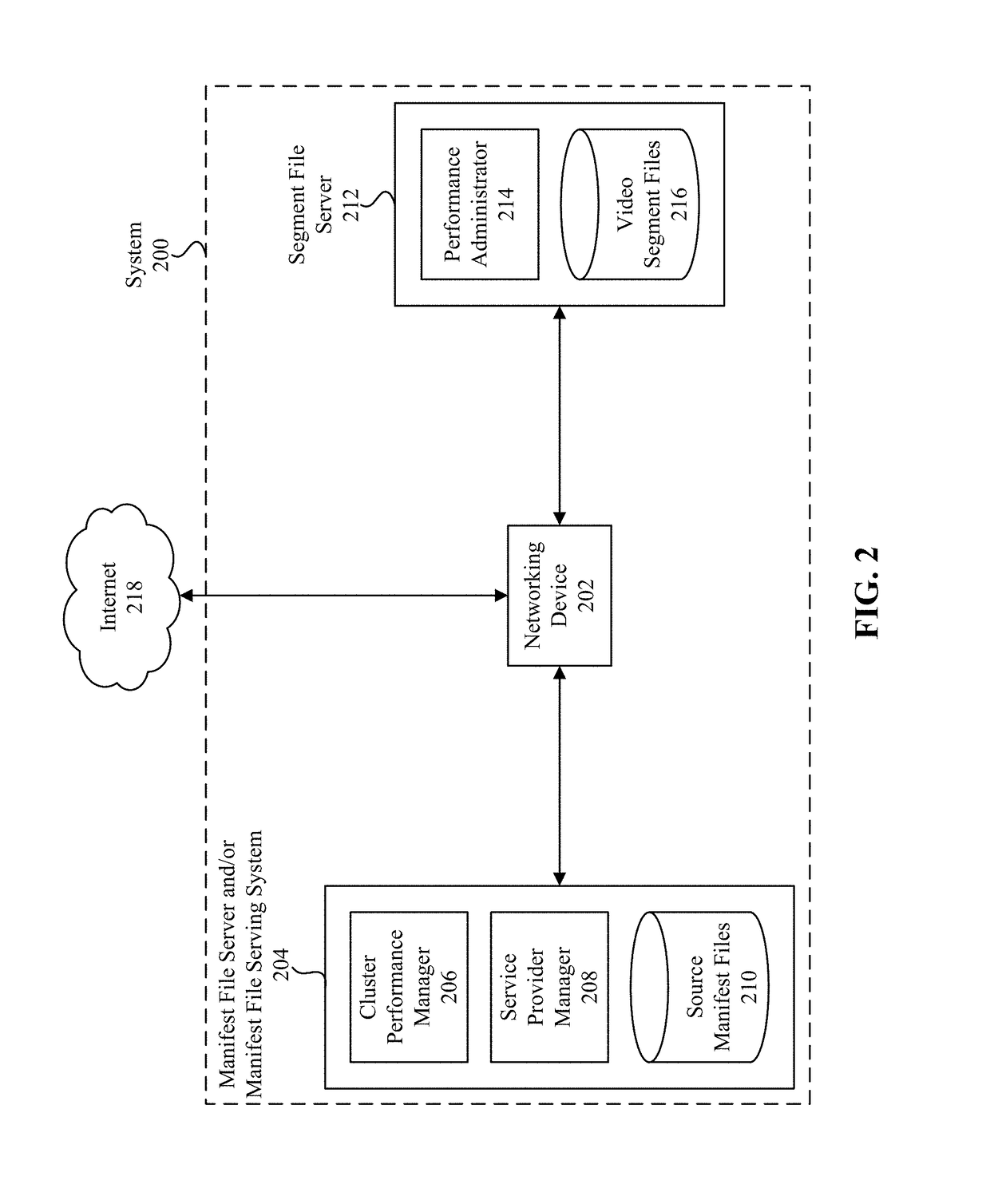However, streaming also has its limitations.
One of the major drawbacks of streaming is that the quality of a user's experience is highly dependent on
network performance and bandwidth.
For example, in the case of
video streaming, if the video data cannot be delivered to the user's device at a
transmission rate that is faster than the rate at which the video data is rendered, playback of the video may freeze and the user's experience of the video may be interrupted.
The performance of a particular
service provider can also change over time, fluctuate regularly or irregularly, and be significantly impacted by unusual occurrences, such as sudden changes in demand, outages, equipment failures, and security breaches.
However, infrastructure
service provider performance is difficult to determine accurately, fairly, and comprehensively.
Service provider performance is also difficult to monitor in
actual use (as opposed to by synthetic testing, for example using a probe or other testing point that does not measure the actual user content session), and is especially difficult to determine from a user's perspective.
Without performance measurements and monitoring, it can be difficult to identify when a
service provider is causing performance issues and the technical conditions under which user experience is affected, especially within a timeframe that allows for
effective action.
Similarly, two users watching the same linear video program via
the Internet, using two different devices connected to two different
Internet access networks, may experience similar minor disparities in the timing of the playback, typically measured in seconds and less than a minute, between their two devices.
These embodiment, however, are generally (though not always) less effective in practice than embodiments where an object can be addressed by more than one URL and the network of infrastructure components can use a second URL to request an object for which it receives a request comprising a first URL, at least because (a) embodiments using non-Internet-standard addressing schemes are generally less flexible for digital service providers and their infrastructure service providers than embodiments that use Internet-standard URLs, and (b) an embodiment requiring an upload of the object to the network of infrastructure components before the object can be delivered through the network of infrastructure components either (i) requires that the digital service complete and confirm the object upload to the network of infrastructure components before publication of the URL, or (ii) sets up a “
race condition” between completion of the object upload to the network of infrastructure components and
end user devices receiving the published URL and issuing requests for it; for all end users where the device request for the URL happens more rapidly than the upload of the object to the network of infrastructure components, the race is “lost” with the undesirable result that the object is not found on the network of infrastructure components and the user experience as a result is less satisfactory.
The problem, then, is how to publish a webpage that can be rendered across multiple devices and that contains a URL that results in playback of a given video using the specific video protocol of each of those multiple devices.
Considering the role of the
hostname authorities file in the
video delivery process—at least authorizing, and in the case where identifying character strings that are not hostnames are used, functionally enabling, retrieval of source manifest files and video segment files—this added level of security further increases the difficulty of gaining unauthorized access to, and use of, the network of infrastructure components.
For example, a segment
file server may be measured by the cluster performance manager at only 25% processor utilization (apparently operating effectively) and yet may be experiencing an abnormally
high rate of TCP
packet loss (and therefore, packet re-sends); if the
high rate of TCP
packet loss is associated with video segment file deliveries to requesting devices connected to a particular network, the problem may be attributable to that network (a conclusion that would be reinforced by the same condition experienced on other segment file servers and associated with video segment file deliveries to requesting devices connected to the same network); conversely, if the
high rate of TCP
packet loss is associated with most or all video segment file deliveries, and is not correlated with video segment file deliveries to requesting devices connected to any particular network, then the problem is much more likely internal to the segment
file server.
However, when the requesting device
hostname resolution activity is the winner of the race, the resolving information is not on hand at the DNS Authoritative
Name Server or other authoritative
name server that receives the
hostname resolution request; in this situation, the hostname resolution may either wait pending the arrival of the resolving information at the DNS Authoritative
Name Server or other authoritative
name server, or the hostname resolution may be resolved with less than maximum accuracy.
The risk that the requesting device hostname resolution activity is the winner of the race, and the resolving
information propagation activity is the loser of the race, is particularly high when the requesting device is the device configuring the
Session ID into the hostname in the requested URL.
Many of these other embodiments, however, are not as readily susceptible to establishing and maintaining the
Session ID without more significant involvement by the digital service.
When transmissions between the
user device and the network of infrastructure components are not encrypted, or are insufficiently encrypted (meaning, for example, that the
encryption is not strong enough to prevent decryption by a network device), network devices that
handle a transmission can read and can modify the content of the transmission.
Other
video delivery protocols may be characterized by larger or small timing disparities in user experience; in addition,
video production, encoding, segmenting, packaging, and related processes can also affect the size of such timing disparities.
Nonetheless, because CDN #1 initially receives every video segment file request, it may similarly detect buffering events, bitrate shifts, video segment
file server failures, and the like, and may then logically attribute some or all of those performance issues to CDN #2, using similar or identical techniques to those described above.
However, in this case, because CDN #1 does not serve any of the video file segments, it need not
encode or store any video segments, and need not be a
content delivery network (CDN) at all.
 Login to View More
Login to View More  Login to View More
Login to View More 


